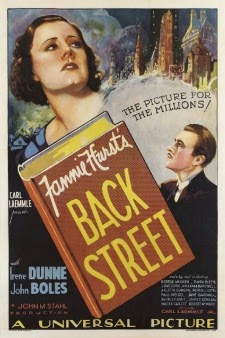This is my entry in the MGM Blogathon, hosted by silver Scenes. Click HERE for more, more, more about the greatest studio of Hollywood's greatest age.
 |
| Hear me roar! |
With more stars than the heavens, MGM supported their stars with the crème de la crème of directors, writers, set and costume designers. In a town built upon dreams, it was the Dream Factory supreme.
 |
| Gilbert Adrian: How shall I make Garbo, Crawford, Shearer and Harlow look like goddesses? |
 |
| Garbo as Adrian's vision of Mata Hari. Definitely NOT the girl next door |
 |
| Garbo in Romance: Adrian's height of European glamour |
So, who would have guessed that the sophisticated Adrian would find another great muse in the star who personified the working class aspirations of American women? Someone said that Fred Astaire gave Ginger Rogers class and she gave him sex appeal. While Adrian’s collaboration with Joan Crawford elevated her into the stratosphere of world class elegance, she gave him a subject with whom he could segue from the remote and exotic to the deceptively ordinary, a look with which 1930s depression audiences could more easily identify. The rarefied world of Garbo was done, replaced by the working girl’s trials and tribulations.
 |
| No More Ladies - Every accessory, down to the sheepdog, counts |
Of course, the common touch of Crawford was as much an illusion as the mystery of Garbo. Throughout the entire decade of the 1930s Adrian and Crawford showed that American style - Hollywood style - was where it was at and the world followed their lead.
 |
| Forsaking All Others - my favorite Adrian creation for Joan |
Probably their greatest creation is from a film that is impossible to view today. Letty Lynton (1932) featured Joan in a ruffled white organdy gown that grabbed the imagination of American women. The story goes that Macy's, that mothership of class aspiration, copied the iconic dress and sold over 500,000. The dress was featured in Macy's Cinema Shop, which featured replicas of dresses worn by Hollywood stars.
 |
| Hello, Macy's? If I buy this dress will I look like Joan Crawford? |
 |
| Another side of Letty Lynton.... presumably the hot and passionate side. |
Unfortunately, this film was almost immediately tangled in a copyright dispute and still remains unavailable. There are some crummy snippets of a bootleg version on YouTube, but it hurts the eyes.
As Hollywood transitioned from silence to sound and the world transitioned from the excesses of the 1920s to the hard realities of the Great Depression, Adrian, Crawford and MGM adapted and prospered. Together, in the darkest of times, each played their part to keep the dream and fantasy of Hollywood alive.







+(1).jpg)





_01.jpg)





